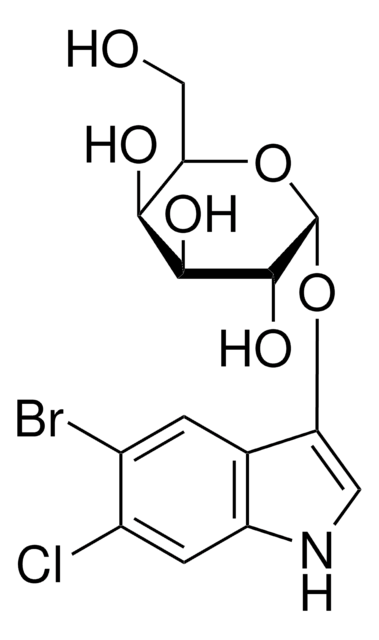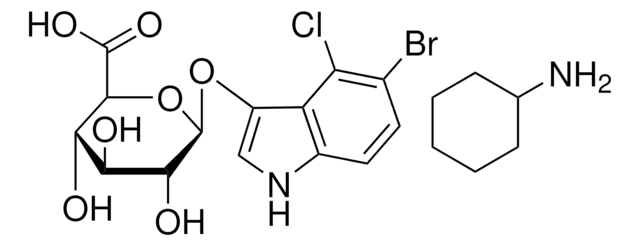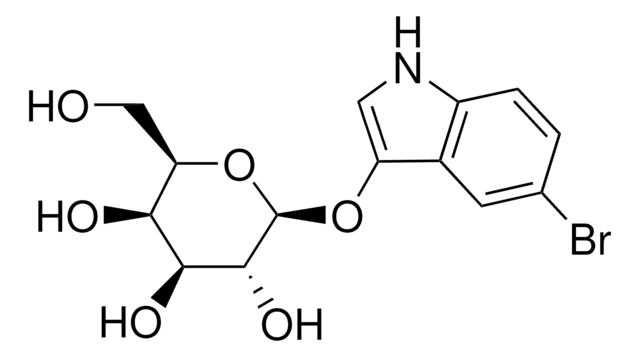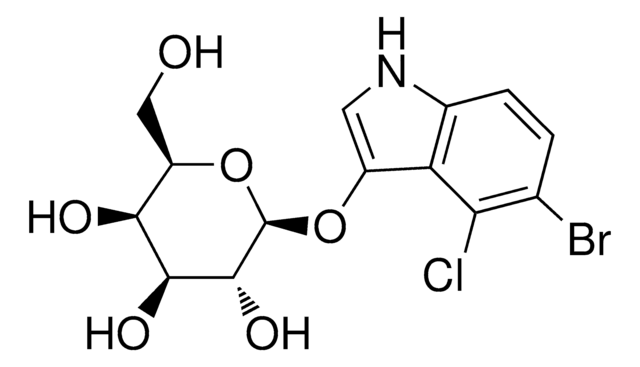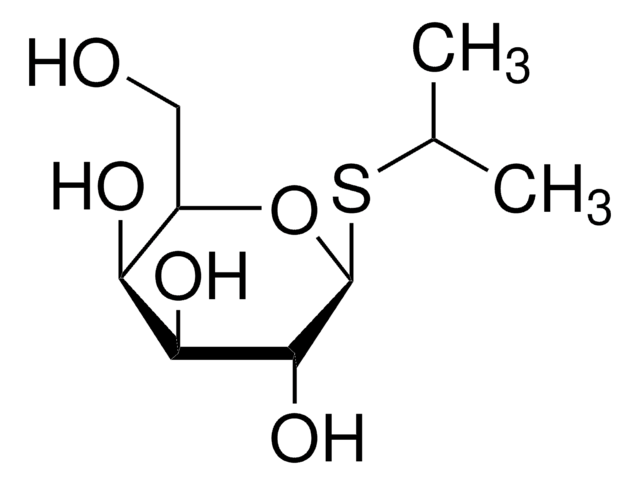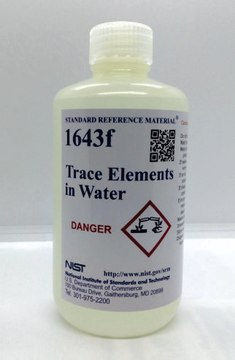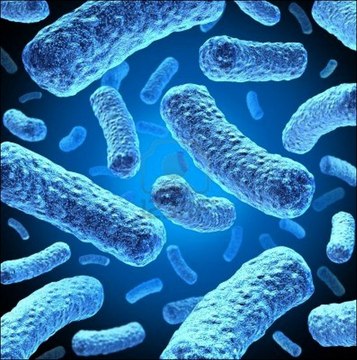S7313
S-Gal® sodium salt
reagent for selection of recombinant bacterial clones
Synonym(s):
3,4-Cyclohexeneoesculetin-B-D-galactopyranoside sodium salt
Select a Size
CN¥1,578.88
Estimated to ship onMay 20, 2025Details
Select a Size
About This Item
CN¥1,578.88
Estimated to ship onMay 20, 2025Details
Recommended Products
grade
Molecular Biology
sterility
non-sterile
Assay
≥95% (HPLC)
form
powder
IVD
not for in vitro diagnostic use
solubility
H2O: 100 mg/mL
suitability
suitable for β-galactosidase test
storage temp.
room temp
1 of 4
This Item | 70623 | 70624 | 70920 |
|---|---|---|---|
| technique(s) microbiological culture: suitable | technique(s) microbiological culture: suitable | technique(s) microbiological culture: suitable | technique(s) microbiological culture: suitable |
| biological source Escherichia coli | biological source Escherichia coli | biological source Escherichia coli | biological source Escherichia coli |
| morphology rod shaped | morphology rod shaped | morphology rod shaped | morphology rod shaped |
| shipped in wet ice | shipped in dry ice, wet ice | shipped in dry ice | shipped in dry ice |
| storage temp. −70°C | storage temp. −70°C | storage temp. −70°C | storage temp. −70°C |
General description
Application
Features and Benefits
- More intense color contrast than X-gal
- Water-soluble and autoclavable for easiest use
- Excellent for use in automated colony counters
- No need to make stock solutions
Other Notes
formulation. A medium prepared with S-Gal® is moderately dark due to the presence of ferric ammonium citrate. This darker background often provides enhanced contrast for automated colony counting or isolation.
Caution
Principle
Linkage
Reconstitution
Legal Information
related product
Storage Class Code
11 - Combustible Solids
WGK
WGK 3
Flash Point(F)
Not applicable
Flash Point(C)
Not applicable
Personal Protective Equipment
Regulatory Information
Choose from one of the most recent versions:
Certificates of Analysis (COA)
Don't see the Right Version?
If you require a particular version, you can look up a specific certificate by the Lot or Batch number.
Already Own This Product?
Find documentation for the products that you have recently purchased in the Document Library.
Our team of scientists has experience in all areas of research including Life Science, Material Science, Chemical Synthesis, Chromatography, Analytical and many others.
Contact Technical Service
